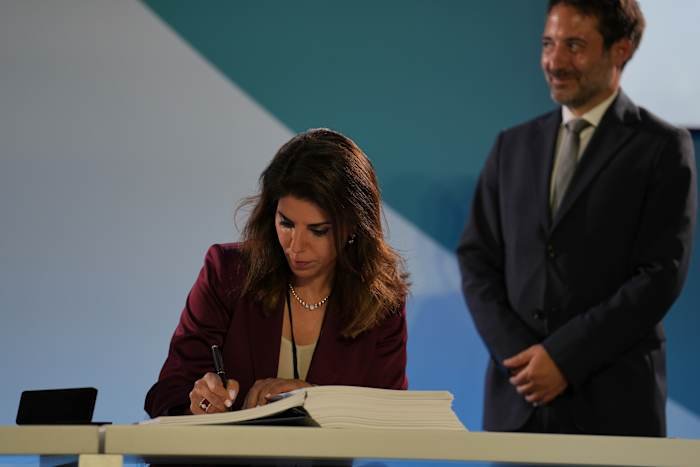NICE – Eighteen nations ratified the High Seas Treaty on Monday, bringing the full to 49 — simply 11 in need of the 60 wanted for the ocean settlement to enter into pressure. The surge in help, occurring in the course of the U.N. Ocean Convention in Good, France, provides momentum to what may turn out to be a historic shift in how the world governs the open ocean.
Right here’s what the treaty is, why it issues and what occurs subsequent.
What’s the Excessive Seas Treaty
Formally generally known as the Settlement on Biodiversity Past Nationwide Jurisdiction, the Excessive Seas Treaty is the primary legally binding settlement targeted on defending marine biodiversity in worldwide waters. These waters, that are past the jurisdiction of any single nation, make up practically two-thirds of the ocean and virtually half the floor of the planet.
Till now, there was no complete authorized framework to create marine protected areas or implement conservation on the excessive seas.
Why is it wanted
Regardless of their remoteness, the excessive seas are below rising stress from overfishing, climate change and the specter of deep-sea mining. Environmental advocates warn that with out correct protections, marine ecosystems in worldwide waters face irreversible hurt.
“Till now, it has been the wild west on the excessive seas,” mentioned Megan Randles, world political lead for oceans at Greenpeace. “Now we’ve got an opportunity to correctly put protections in place.”
The treaty can also be important to reaching the worldwide “30×30” goal — a world pledge to guard 30% of the planet’s land and sea by 2030.
How the treaty works
The treaty creates a authorized course of for nations to determine marine protected areas within the excessive seas, together with guidelines for damaging actions like deep-sea mining and geo-engineering. It additionally establishes a framework for technology-sharing, funding mechanisms and scientific collaboration amongst nations.
Crucially, choices below the treaty might be made multilaterally by way of conferences of events (COPs) reasonably than by particular person nations performing alone.
What occurs when it reaches 60 ratifications
As soon as 60 nations ratify the treaty, a 120-day countdown begins earlier than it formally enters into pressure. That will unlock the flexibility to start designating protected areas within the excessive seas and put oversight mechanisms into movement.
As of Monday night, 49 nations and the EU had ratified, that means 11 extra are wanted to set off that countdown.
What comes after ratification
The primary Convention of the Events (COP1) should happen inside one 12 months of the treaty’s entry into pressure. That assembly will lay the groundwork for implementation, together with choices on governance, financing and the creation of key our bodies to guage marine safety proposals.
Environmental teams are pushing to surpass the required 60 ratifications, and to take action shortly – the extra nations that ratify, the stronger and extra consultant the treaty’s implementation might be. There’s additionally a deadline: solely nations that ratify by COP1 might be eligible to vote on crucial choices that decide how the treaty will function.
“To achieve 60 ratifications can be a fully huge achievement, however for the treaty to be as efficient as attainable, we’d like nations from all around the world to have interaction in its implementation,” mentioned Rebecca Hubbard, director of the Excessive Seas Alliance. “So the following step might be to go from 60 to world.”
The surge in help on Monday has raised hopes that 2025 may mark a turning level for prime seas safety.
“We’re getting ready to making excessive seas historical past,” Hubbard mentioned.
___
Observe Annika Hammerschlag on Instagram @ahammergram
___
The Related Press receives help from the Walton Household Basis for protection of water and environmental coverage. The AP is solely liable for all content material. For all of AP’s environmental protection, go to https://apnews.com/hub/climate-and-environment
Copyright 2025 The Related Press. All rights reserved. This materials is probably not printed, broadcast, rewritten or redistributed with out permission.

